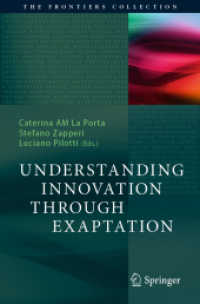Full Description
Drawing on examples from literary and audiovisual media, this book explores the meaning transfer in translation with the theory of force dynamics as a case in point.
The volume investigates how meaning patterns related to force dynamics are retained or transformed in translation. Rooted in Leonard Talmy's cognitive semantics, force dynamics constitutes the faculty of construing the world in terms of entities interacting through force, reflecting his pioneering work within cognitive linguistics on how language encodes conceptual meaning. This volume addresses these phenomena from a multilingual perspective, examining how meaning is constructed, conveyed, and understood across languages. With the focus on different text types and genres in literary and audiovisual media, this approach allows for a nuanced understanding of how mediation of nuanced meanings functions in varied contexts and how cognitive in-depth structures interact with their linguistic surface realisations. The volume thus offers a new perspective on the complexity of meaning transfer and the retention of information in translation.
Mapping Meaning in Translation through the Cognitive Semantics of Force Dynamics will be of interest to students and scholars in translation studies.
Contents
1. Setting the Stage: Exploring Meaning in Translation through Force Dynamics
2. Tracing Theoretical Footprints: Cognitive Semantics in Translation Studies
3. Exploring the Framework: Multilingual Analysis of Translation Equivalence
4. Reflections and Key Takeaways: Meaning Transfer in Translation through the lens of Cognitive Semantics
Sources
Primary sources
Secondary sources
Appendix A: Force-dynamics (FD) categories and patterns
Appendix B: Research material
Appendix C: Detailed statistical results
Index






